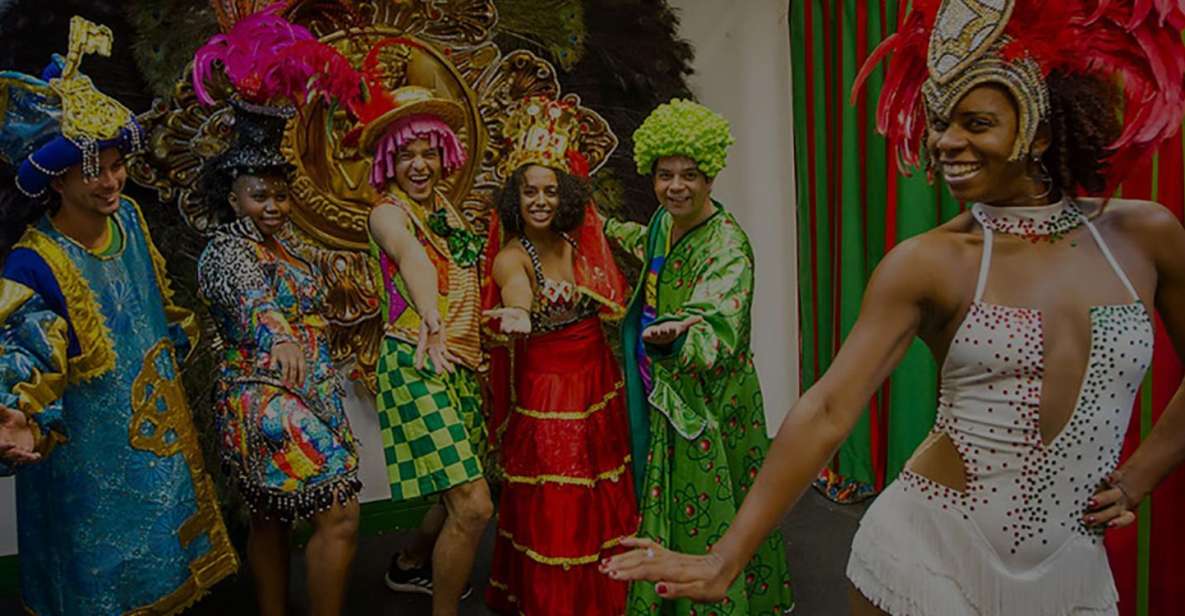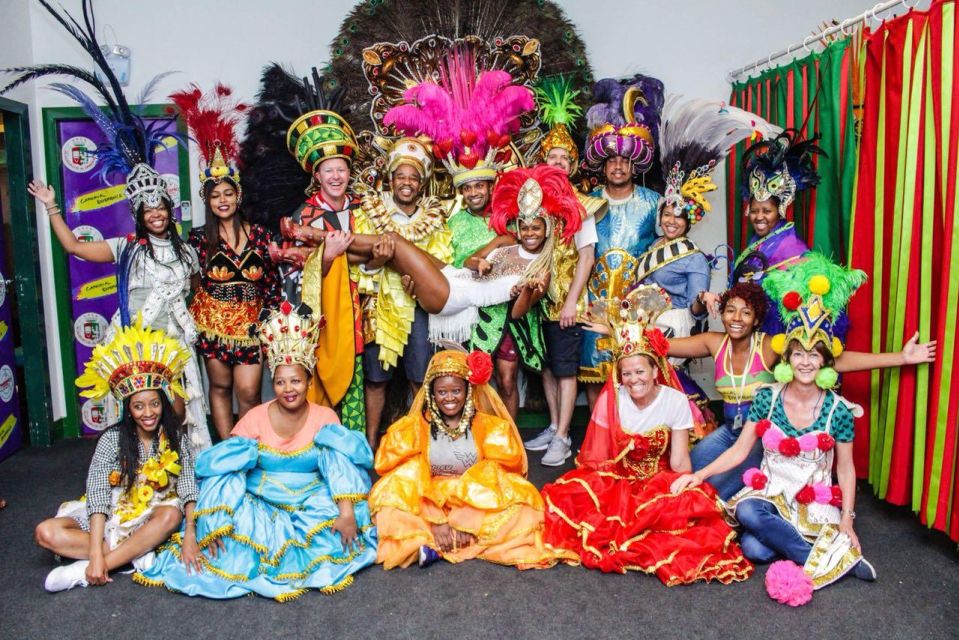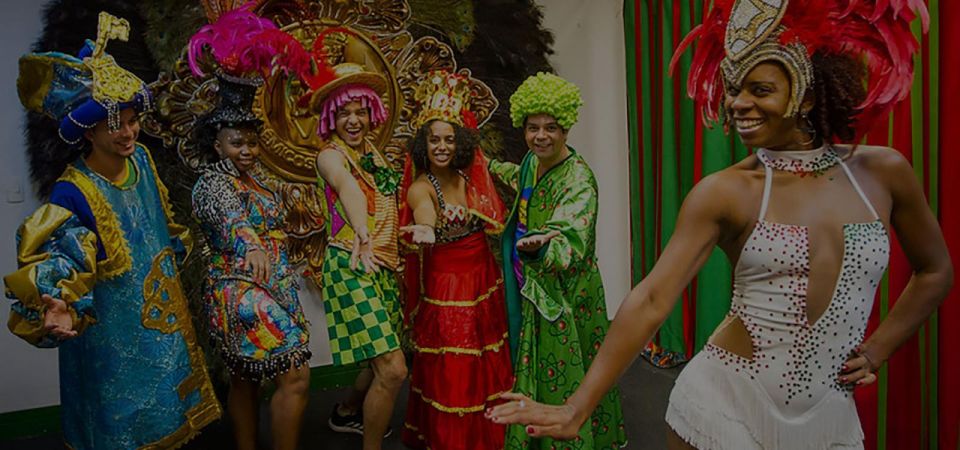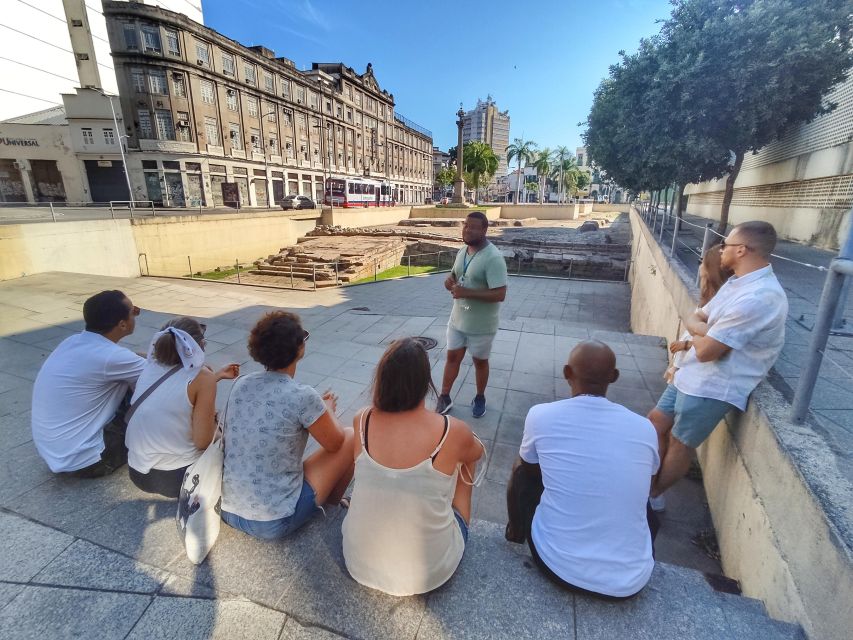Nestled amidst the cobblestone streets, where echoes of rhythmic beats linger in the air, Pedra Do Sal stands as a sanctuary of cultural heritage and resistance. As the sun sets, shadows dance along the walls, whispering tales of strength and resilience.
But what truly lies beneath the surface of this historical gem? A journey through its vibrant streets promises more than just samba rhythms; it unveils a narrative of struggle, triumph, and the undying spirit of a community that has shaped the very essence of Afro-Brazilian culture.
Good To Know

- Pedra Do Sal embodies Afro-Brazilian culture and resistance in Rio’s historical landscape.
- Samba’s roots at Pedra Do Sal reflect resilience and unity among enslaved Africans.
- Notable figures like Cartola and Clementina de Jesus shaped Samba’s legacy of strength.
- Afro-Brazilian heritage in Samba, Carnival, and cuisine showcases a vibrant fusion of cultures.
The History of Pedra Do Sal

Nestled in the heart of Rio de Janeiro, Pedra Do Sal stands as a vibrant symbol of cultural resilience and historical significance. The architectural influences of this area reflect a blend of African and Portuguese styles, showcasing intricate details and vibrant colors that pay homage to the rich cultural heritage of the Afro-Brazilian community.
Pedra Do Sal holds immense cultural significance as it served as a gathering place for enslaved Africans to express their traditions, music, and dance in the face of adversity. Its cobblestone streets and historic buildings echo the stories of resistance and strength of the Afro-Brazilian population, making it a pivotal site in the history of Rio de Janeiro’s cultural landscape.
Origins of Samba and Afro-Brazilian Culture

The cultural vibrancy of Pedra Do Sal not only reflects the resilience and historical significance of Rio de Janeiro but also serves as a focal point for exploring the origins of Samba and Afro-Brazilian culture.
Cultural Influences: Samba’s roots intertwine with African, Indigenous, and Portuguese cultural heritage, creating a rich and diverse musical tapestry.
Musical Evolution: From its humble beginnings in the Afro-Brazilian communities to becoming a symbol of national identity, Samba has undergone a fascinating musical evolution.
Dance Techniques: Afro-Brazilian dance techniques, such as capoeira-inspired movements and the vibrant energy of Carnival, have influenced the dynamic and rhythmic nature of Samba dance.
Notable Black Figures and Their Legacy

Amidst the vibrant tapestry of Afro-Brazilian culture, stands a cadre of influential black figures whose legacies resonate through the annals of history. These notable individuals have left an indelible mark on society, showcasing black excellence and cultural impact in Brazil. From legendary samba musicians like Cartola and Clementina de Jesus to iconic abolitionists such as Luiza Mahin and Zumbi dos Palmares, their contributions have shaped the cultural landscape of the nation. Through their art, activism, and resilience, these figures have inspired generations and continue to be celebrated for their unwavering dedication to promoting Afro-Brazilian heritage and challenging social norms.
| Notable Black Figures | Legacy |
|---|---|
| Cartola | Legendary samba musician |
| Clementina de Jesus | Iconic samba singer |
| Luiza Mahin | Prominent abolitionist |
| Zumbi dos Palmares | Symbol of resistance |
Samba Schools and Carnival Traditions
From exploring the legacies of notable black figures to understanding the roots of samba and its cultural significance, the journey now leads to unraveling the captivating world of Samba Schools and Carnival Traditions.
Carnival celebrations bring vibrant colors, music, and dance to the streets of Rio.
Samba workshops offer a hands-on experience to learn the rhythmic beats and lively moves.
Samba schools showcase elaborate costumes, intricate choreography, and spirited performances during the lively Carnival parades.
Immerse in Afro-Brazilian Gastronomy
Set out on a flavorful journey delving into the rich tapestry of Afro-Brazilian gastronomy, where vibrant spices and traditional recipes intertwine to create a sensory feast for the palate. When exploring Afro-Brazilian culinary delights, one encounters a fusion of flavors that reflect the cultural diversity and history of Brazil. Below is a glimpse into the diverse and mouth-watering Afro-Brazilian dishes to savor:
| Dish | Description | Highlight |
|---|---|---|
| Feijoada | A hearty stew of black beans and pork | A traditional dish enjoyed during samba festivities |
| Acarajé | Deep-fried black-eyed pea fritters | Popular street food with origins in African cuisine |
| Moqueca de Peixe | Fish stew cooked with coconut milk | A coastal favorite showcasing Afro-Brazilian flavors |
Resistance Through Music and Dance
Enjoy the powerful narratives of resistance intertwined with the vibrant rhythms of music and dance in the Afro-Brazilian community. Music resistance and Dance culture play pivotal roles in expressing defiance against historical injustices and celebrating resilience. Through mesmerizing beats and mesmerizing movements, the spirit of resistance is kept alive, echoing the struggles and triumphs of generations past.
Music resistance serves as a tool for storytelling, preserving the narratives of resistance and resilience.
Dance culture embodies the strength and unity of the Afro-Brazilian community, showcasing their history and traditions through movement.
Together, music and dance create a powerful platform for expressing resistance, resilience, and cultural pride in the face of adversity.
Experience the Vibrant Samba Street Parties
Discover the pulsating energy and vibrant culture of Samba Street Parties, where the rhythm of the music and the joyous dance movements encapsulate the essence of Afro-Brazilian celebrations.
At these lively events, participants can engage in Samba workshops to learn the intricate steps and feel the heartbeat of this traditional music genre. Cultural performances showcase the rich history and diversity of Afro-Brazilian traditions, providing a captivating insight into the roots of Samba.
Attendees can enjoy the vibrant atmosphere, surrounded by colorful costumes, lively drumbeats, and infectious melodies. These street parties offer a unique opportunity to experience the dynamic spirit of Brazilian culture and the passionate embrace of Samba within the heart of Rio de Janeiro.
Guided Tour Through Afro-Rio’s Historical Sites
Strolling through the vibrant streets of Rio de Janeiro, travelers are guided on a captivating journey through Afro-Rio’s historical sites, where the rich tapestry of culture and resistance unfolds before their eyes.
The tour delves deep into the cultural heritage of Afro-Brazilian communities, shedding light on important black personalities who fought against slavery. Along the way, participants learn about the architectural significance of the sites, understanding how the buildings and structures played a role in shaping Afro-Rio’s history.
This immersive experience provides a unique opportunity to explore the roots of samba and the profound impact of Afro-Brazilian traditions on the city’s identity.
Common Questions
How Far in Advance Should I Book This Tour to Guarantee Availability?
To secure availability, travelers should book this tour in advance, especially during peak times. Last-minute spots may be limited, so reserving early ensures a guaranteed experience. Flexible booking options allow for easy planning.
Can Children Participate in This Tour, and Is There a Minimum Age Requirement?
Children of all ages can participate in this tour, offering family-friendly options and inclusive experiences. There are no minimum age requirements, making it a child-friendly activity for families looking to immerse in Afro-Brazilian culture together.
Are There Any Specific Dress Code Requirements for This Tour?
There are no specific dress code requirements for this tour, providing participants with flexibility. Enjoy the experience comfortably. Embrace the culture, history, and vibrant energy while immersing in Afro-Brazilian traditions.
Will There Be Opportunities to Interact With Local Community Members During the Tour?
During the tour, you will have opportunities for local engagement and cultural exchange. Interact with community members, gaining insights into their daily lives and traditions. Enhance the experience by connecting with the vibrant Afro-Brazilian culture.
Is There a Limit to the Number of Participants Allowed on This Tour at One Time?
Capacity restrictions exist to ensure an intimate experience. Group size limitations are in place. Participants can expect a personalized tour with attention to detail. The tour is designed for a specific number of individuals to optimize engagement and enjoyment.
The Sum Up
To sum it up, Pedra Do Sal – Samba and Resistance offers a captivating journey into the heart of Afro-Brazilian culture. It showcases the rich history and vibrant traditions of samba and resistance. From exploring historical sites to experiencing the lively atmosphere of samba street parties, this tour provides an immersive and educational experience like no other.
Travelers can expect to explore the resilience and creativity of the Afro-Brazilian community. This makes it a must-visit destination for those seeking a deeper understanding of Brazil’s cultural heritage.
You can check if your dates are available here: